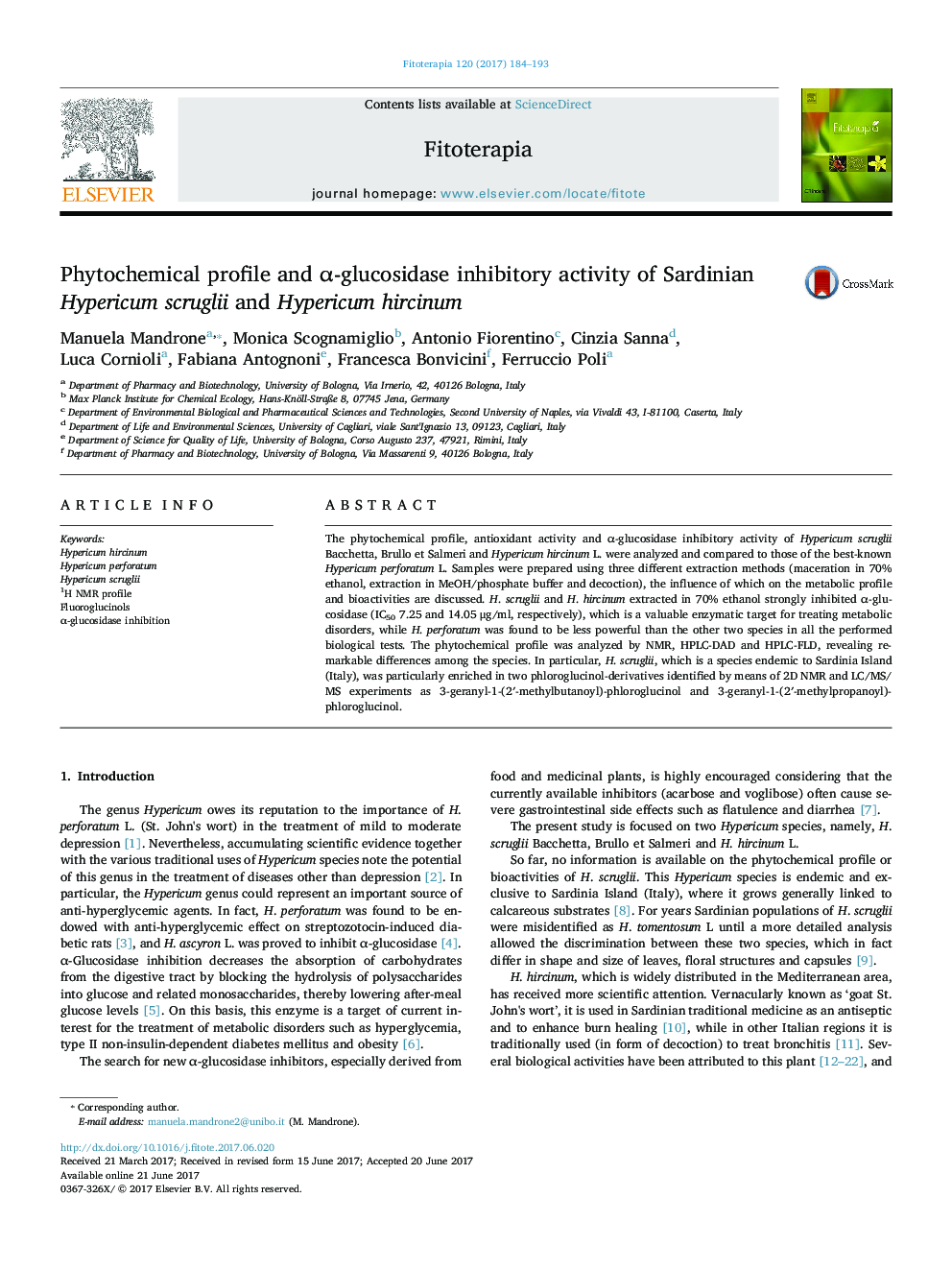| Article ID | Journal | Published Year | Pages | File Type |
|---|---|---|---|---|
| 5554968 | Fitoterapia | 2017 | 10 Pages |
The phytochemical profile, antioxidant activity and α-glucosidase inhibitory activity of Hypericum scruglii Bacchetta, Brullo et Salmeri and Hypericum hircinum L. were analyzed and compared to those of the best-known Hypericum perforatum L. Samples were prepared using three different extraction methods (maceration in 70% ethanol, extraction in MeOH/phosphate buffer and decoction), the influence of which on the metabolic profile and bioactivities are discussed. H. scruglii and H. hircinum extracted in 70% ethanol strongly inhibited α-glucosidase (IC50 7.25 and 14.05 μg/ml, respectively), which is a valuable enzymatic target for treating metabolic disorders, while H. perforatum was found to be less powerful than the other two species in all the performed biological tests. The phytochemical profile was analyzed by NMR, HPLC-DAD and HPLC-FLD, revealing remarkable differences among the species. In particular, H. scruglii, which is a species endemic to Sardinia Island (Italy), was particularly enriched in two phloroglucinol-derivatives identified by means of 2D NMR and LC/MS/MS experiments as 3-geranyl-1-(2â²-methylbutanoyl)-phloroglucinol and 3-geranyl-1-(2â²-methylpropanoyl)-phloroglucinol.
Graphical abstractHypericum scruglii and Hypericum hircinum showed strong α-glucosidase inhibitory activity, with IC50 7.25 and 14.05 μg/ml, respectively. 3-Geranyl-1-(2â²-methylbutanoyl)-phloroglucinol and 3-geranyl-1-(2â²-methylpropanoyl)- phloroglucinol were found peculiar of H. scruglii phytochemical profile.Download high-res image (242KB)Download full-size image
